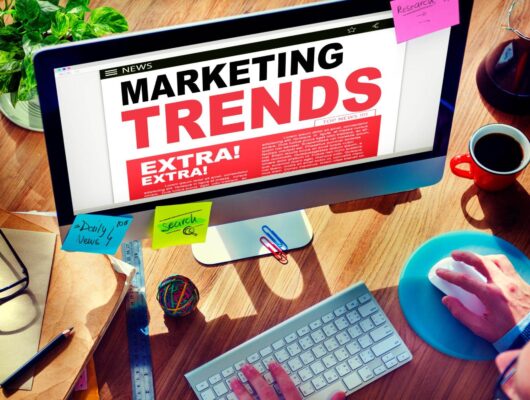New year, new marketing trends! And since what was working last year is constantly evolving, here’s what a life science marketing strategy for 2022 should look like.
The rules of the game are changing as the impact of the sales enablement role is constantly growing. As of early 2022, the seller to sales enablement employee ratio has changed from 30:1 to 20:1, demonstrating that sales enablement teams are supporting fewer and fewer sellers.
This trend is twice as present when it comes to life sciences companies. Sales enablement teams are now forced to respond to the shifting market in real-time to survive, triggering sales representatives and MSLs to find newer ways of approaching customer meetings. 2020 demonstrated just how important client digital engagement can be.
Here are a few key points to follow if you are working in life science marketing and are looking to establish and execute an efficient digital sales enablement strategy.
Secure Easy Access To an Approved Content Database
Time is a commodity. Having an available panoply of sell sheets, demonstrations, content dashboards, and approved videos is a work-hack life science brands can employ for a customer-centric experience.
As a marketing representative, you need to maximize every customer interaction, making every meeting as valuable and relevant as possible to your stakeholders. This is just one more reason to have approved content available at a moment’s notice.
Your sales enablement strategy can greatly benefit from a digital upgrade, allowing you access to the right content at any given time.
Being able to search, view and download approved content in an instant — either from your home office or during a virtual meeting — allows you or your designated sales representatives to remain focused on educating and servicing the customers.
Content Operations Integration
To develop a strategy for the life science industry in 2022, digitally transferring content as smoothly as possible between marketing, medical and sales departments is pivotal.
This will optimize collaboration between teams and ensure access to compliant content, as your representatives will be updated instantly on any content approval or modification taking place.
In the biotech field, such modifications can include prescription changes, modified medical claims, or any other information essential to be updated in real time.
Integrating your content review, approval, and distribution solutions with the help of an online platform will streamline your handoff and hand back processes.
Some areas you will clearly observe improvement:
- Process compliance
- Real-time teamwork collaboration
- Digital and interactive elements review
- High-value oriented content creation
- On-demand reporting and data visualizations
- Cycle times, reviewer times, and other KPIs
- Pattern and trend detection, along with other correlations and robust data visualizations.
Identify What Content Works and Why

A well-prepared team of representatives, ready to pop out visual content to aid their presentation, will grab the attention of any busy healthcare professional (HCP).
Key opinion leaders (or KOLs for short) find it increasingly easier to prioritize and share valuable content when key metrics are available to illustrate its value. And as we all know, “honest measure leads to improvement.”
By digitizing your approved content database, you will be granting your marketing team access to content views, downloads, favorite counts, and other content analytics within the company.
Once you figure out which content works best, you can use this information to maximize potential and influence upcoming content creation.
The one common theme for all these tactics is tooling. Your teams require digital tools to better do their job and collaborate in a virtual selling environment.
Life Science Marketing Strategy: 10 Key Steps
1. Your Executives Are Responsible For The Digital Vision
If you plan to transform the company into a more digital organization, it’s up to senior management to become a driving force in the process. It all starts with establishing a clear vision of how this process will affect your business model, along with the obstacles and opportunities one might expect.
2. Your Marketing Efforts And Relationship With Customers Must Be Digitized
New digital tools will help you segment customers, better handle their needs, improve positioning, generate better sales opportunities and create an overall smarter, less invasive marketing approach.
3. Do Not Ignore Your Digital Presence
Consider it your store’s window. Keep it simple yet welcoming, instructive yet persuasive, clear yet surprising.
4. Cross-sell Through Multiple Channels And Provide Tailored Experiences
Incorporating new technologies is vital to providing a unique and personalized experience to your biotech-savvy customers. Different channels, different users, different clients.
5. Innovate With Your Products
This is the key to staying competitive. Incorporate the latest in digital client service and remain attractive to your customers.
6. Attract And Harvest Digital Talent
Attract a fresh, expanding, digital native team that knows how to create a connection between customers and employees.
7. Digitize Your Work Environment
Use digital tools not only for your marketing plan but also to improve connectivity and staff productivity. Help your team generate valuable content in the shortest possible time. Even if your team is global and fully remote, it should have the energy of a think tank.
8. Speed Up The Business Processes
Use ICTs (Information Communication Technology) to automate tasks, reduce costs and errors and increase capacity.
9. Gather Data And Channel It Towards Better Decision-making
An active in-depth insight tech tool for your business is vital in a medium where you sometimes need to take quick and complex decisions.
10. Know Your Business And Embrace Change
Remain committed, flexible, and open to new scientific breakthroughs in the field. Such a vision requires the help of analytical technologies.
Wrapping Up
Your first step in developing a marketing strategy for the life science sector should be working alongside your team to identify your goals within the digital sales environment and then weighing your options.
Don’t forget to gather feedback from all the departments involved and allow them to contribute to your company’s digital upgrade.
Building a tech stack and staying relevant in 2022’s digital biotech market can be hard work. But it can also be rewarding. Make sure to set up clear milestones, and the results are bound to pay off.
You might also enjoy:








